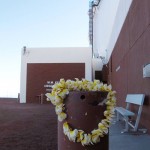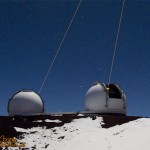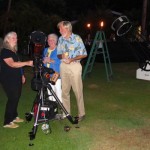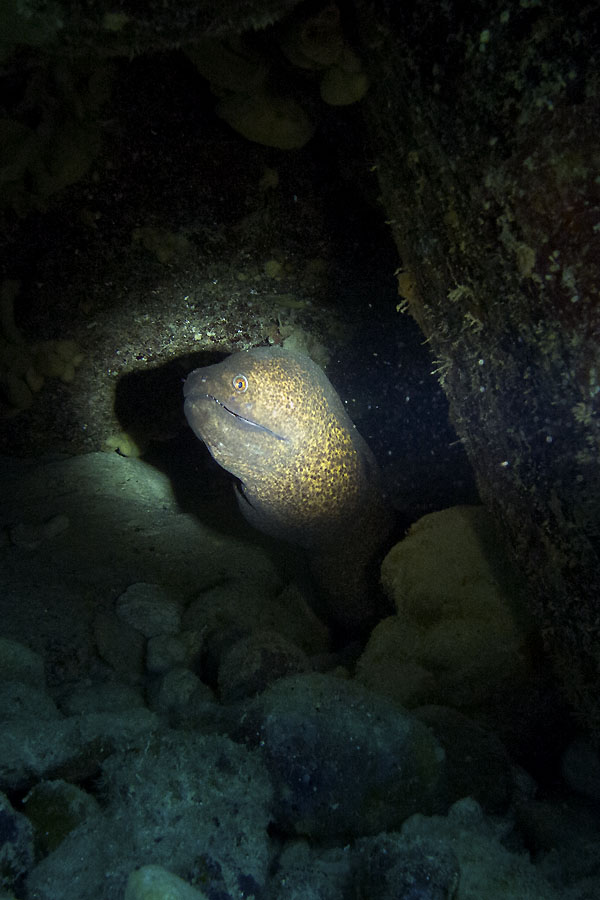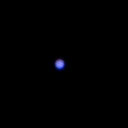W. M. Keck Observatory press release…
Engineers and astronomers are celebrating the much anticipated first light and first two nights commissioning of the MOSFIRE instrument, now installed on the Keck I telescope at W. M. Keck Observatory. MOSFIRE (Multi-Object Spectrometer For Infra-Red Exploration) will vastly increase the data gathering power of what is already the world’s most productive ground-based observatory.
“This is a near-infrared multi-object spectrograph, similar to our popular LRIS and DEIMOS instruments, only at longer wavelengths,” explained Keck Observatory Observing Support Manager Bob Goodrich. “The dedicated MOSFIRE project team members at Keck Observatory, Caltech, UCLA, and UC Santa Cruz are to be congratulated, as are the dedicated observatory operations staff who worked hard to get MOSFIRE integrated into the Keck I telescope and infrastructure. A lot of people have put in long hours getting ready for this momentous First Light.”

First light with MOSFIRE, and unprocessed image of the interacting galaxies NGC4038 and NGC4039, credit: W. M. Keck Observatory
The first unprocessed image from MOSFIRE was made on the night of April 4, despite thick cirrus clouds over Mauna Kea. The subject was two interacting galaxies known as The Antennae. Additional images adn spectra were gathered on the night of April 5, as part of the continuing commissioning of the instrument.
MOSFIRE gathers spectra, which contain chemical signatures in the light of everything from stars to galaxies, at near-infrared wavelengths (that is, 0.97-2.45 microns, or millionths of a meter). Infrared is light which is beyond red in a rainbow—just beyond what human eyes can detect. Observing in the infrared allows researchers to penetrate cosmic dust clouds and see objects that are otherwise invisible, like the stars circling the supermassive black hole at the center of the Milky Way. It also allows for the study of the most distant objects, the light of which has been stretched beyond the red end of the spectrum by the expansion of the universe.
Continue reading “First Light of Powerful New MOSFIRE Instrument”
